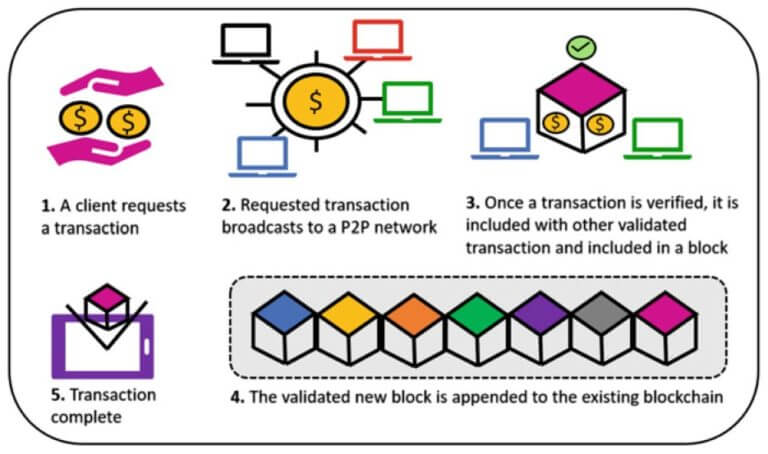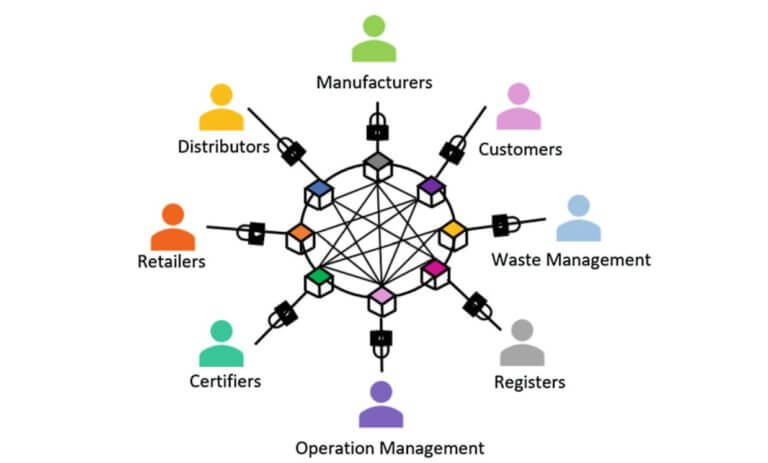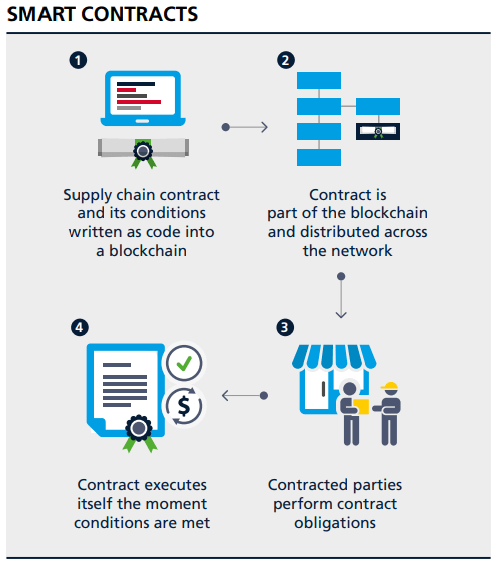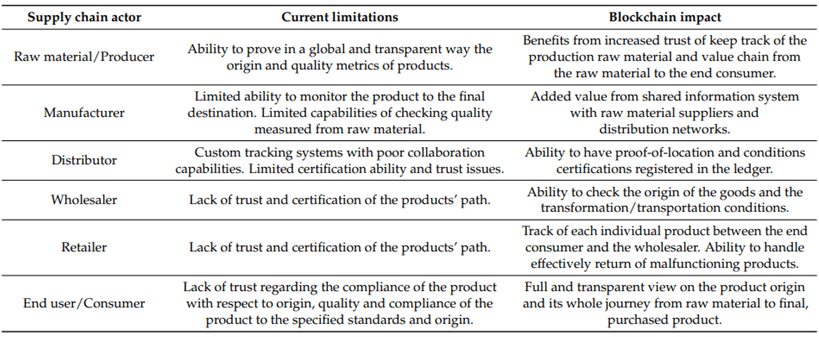Blockchain: a game change to Supply chain management
2022/4/27
Author: Chanisara Kajornchaikul

Table of Contents
Introduction
Over the past few decades, blockchain technology has become a popular word. Even though blockchain has been widely adopted in the financial industry (particularly cryptocurrency such as Bitcoin), however, the practical uses of blockchain in various industries are still in the early stages of development. There are no standards available for blockchain application, but the supply chain management domain holds great promise.
I’m Chanisara, associate DX Consultant at ISOL. Today, I’d guide you to the fundamentals of blockchain, and the potential of this technology to supply chain applications. At the end of this article, I will provide a summary of the main challenge of blockchain to the supply chain industry.
A digital currency that uses a peer-to-peer network to facilitate payment.
Blockchain overview
Firstly, before we go deep down to the application of blockchain. Let me briefly explain the concept of blockchain.
A traditional or a public blockchain is a decentralized database or public digital ledger that is shared across computer networks or nodes. It is made up of several data blocks that are stored on nodes. While making interaction between parties or a transaction, the valid transaction will be packed in a block.
After the number of transactions reaches the limit of the block, then they will be broadcasted across every user (nodes) in the network or peer-to-peer (P2P) network. Nodes then will verify and authenticate transactions based on the consensus mechanisms of a majority of the participants in the system [e.g. Proof of work (PoW), proof of stake (PoS) etc]. After nodes validate the transaction and reach an agreement, a new block will be added to the existing main blockchain.
Nodes
Any kind of devices such as computers, laptops, or servers that are participating in the global peer-to-peer network. It has four main functions: sharing information, preserving a copy of confirmed transactions history, validating and authenticating a transaction.
PoW
Proof of work is a form of cryptographic proof in which one party (the prover) proves to others (the verifiers) that a certain amount of a specific computational effort has been expended.
PoS
Proof of stake is a class of consensus mechanisms for blockchains that work by selecting validators in proportion to their quantity of holdings in the associated cryptocurrency. This is done to avoid the computational cost of PoW scheme.

The strength of blockchain in the supply chain
Below are the key merits to applying blockchain in supply chain management.
- Improve traceability and transparency
- Ensure data integrity, security, and authenticity
- Smart contract
- Respect user’s privacy
- Transcend the physical limitations of monetary transactions
1. Improve traceability and transparency
Blockchain can provide an end-to-end, transparent, and tamper-proof history of information, inventory, and cash flows associated with transactions. In fact, many parts of the logistic value chain are still involved with manual processes such as gathering freight bill payment, resolving payment disputes, and securing proofs of delivery. These time-consuming and labor-intensive manual tasks can result in errors and productivity losses, sapping employees’ manpower that could be used to better manage the supply chain. Authenticated digital documents to replace conventional paper documents i.e. letters of credit, bills of lading, insurance policies, invoices, and shipping instructions is an example of blockchain application to address this issue.
However, industrial IoT and 5G advancements in recent years have made it possible for today’s supply chain management systems to digitally coordinate every sub-process, from product supply to product delivery.
With the support from blockchain technology, it enables data transparency among stakeholders in the supply chain. Rather than depending on several parties to maintain (and update) their own copies of the same dataset, blockchain technology can provide a single source of truth. Traditionally, it is difficult for a centralized system offered by a third party to interconnect the whole supply chain because a high level of trust is required. However, orders, receipts, payments, and digital assets such as warranties and licenses can be tracked alongside physical asset records by using blockchain over the whole production-to-consumption cycle. As a result, the trust of customers, suppliers, dealers, and retailers is enhanced.
With the advantage of product provenance and traceability, currently, there are some initiative projects attempting to use the blockchain-based system. For example, the Everledger platform [2] develops a blockchain-based platform to establish stronger trust in the diamond trade and supply chain. The platform enables retailers’ greater transparency and visibility to their suppliers by adding compliance, country, and the acknowledgment of mining and polishing events. At a glance, they can examine the whole inventory, sustainability requirements, and diamond compliance. Because of blockchain technology, the platform can support product provenance and enhance fraud detection.

2. Ensure data integrity, security, and authenticity
A cryptographic hash function is an algorithm behind the security of blockchain. Traditionally, all records on a blockchain are individually encrypted with an invariant cryptographic signature called a hash value. Since the unique output (called digest) doesn’t provide any correlation between input and output, it is practically infeasible to identify or reverse the actual data from the computation. The digest’s output will be affected by even the tiniest change in the input. Therefore, hashing functions are commonly used to protect the integrity and immutability of data on the blockchain.
Because of the high security of blockchain, it can provide security to supply chain management solutions, and no one is allowed to modify the data records or misuse the data. As long as hash functions are behind blockchain technology, it is difficult to modify, hack or deceive the digital ledger in their favor.
Hash value
The specific fixed-length value output that uses a mathematical function to transform input data.

The slight change to input data can change the hash value so extensively from the original input. (Avalanche effect).[3]
Avalanche effect
The desirable property of cryptographic algorithms, typically block ciphers and cryptographic hash functions, wherein if the input is changed slightly, the output changes significantly.
3. Automate transactions with smart contracts
The consensus algorithms are behind efficient, fair, real-time, functional, trustworthy, and secure mechanisms of the blockchain. It is a system of rules that determines the legality of contributions made by the blockchain’s various participants. In another word, a smart contract is an auto-enforced digital contract. When a certain condition or a term of the agreement is met between stakeholders, a blockchain-based application such as a smart contract can execute a transaction automatically and verify that the encoded contract is in accordance with privacy and security.

Once one of the parties violates the contract, they will get a penalty mentioned in the smart contract immediately. For example, the deposit of the users who break the contract may automatically be cut. In the case of the supply chain, a smart contract between supplier and customer can be made. When a product is received and meets all requirements, it can automatically transfer the funds from the user to the supplier’s blockchain wallet immediately.

4. Respect user’s privacy
Even though blockchains are public ledgers, they can be designed in a way that allows people to control who can see the information in the blocks. In a blockchain network, there is no third-party entity that is responsible for protecting users’ private data. Instead, one or more addresses are generated for each user to engage and connect with other people to establish communication, make a transaction or sign any contract. As a result, a user’s private information is not public, and it confidentially protects the privacy of the user in the blockchain.
A pseudonym can be provided to users through public blockchains, whereas permissioned and private blockchains can pre-authenticate in advance to enable complete anonymity in the network. As a result, the supply chain can run smoothly, and the other parties to the network are certain that they are working with legitimate participants whose identities are kept private.

5. Transcend the physical limitations of monetary transactions
All of the features and functions of blockchain technology are available regardless of where a user is physically located. Using a decentralized network of blockchain, all legal participants in the supply chain can participate in a freight’s lifecycle from anywhere. It can increase time efficiency. For example, the regulation and interrelationships of the nations may be involved in the transaction, the payment might take several months to reach its destination through traditional banks. Instead, a worldwide blockchain network can be utilized to conduct digital currency transactions. Therefore, confirmation of transactions and payment fulfillment can speed up to minutes with blockchain technology.

Challenge in blockchain technology to supply chain industry

Blockchain technology has the potential to revolutionize supply chain management. However, today`s problem is on integrating supply chain management with this technology seamlessly. The supply chain typically consists of many complicated processes; therefore, insightful knowledge of the supply chain and logistics process is important to have full utilization of blockchain.
The supply chain sector is in the early stages of testing this new technology. Many businesses, on the other hand, are eager to get started using blockchain. Among them, there is a Japanese major system integrator who has developed a blockchain-based supply chain management platform where ISOL supported deployment. Since ISOL has specialized in supply chain management, logistics, and the manufacturing industry, we realize that the supply chain in each area has different operation types. Therefore, we help the customer bridge the gap between actual logistic operations and IT systems before considering the option of adopting blockchain technology.
Blockchain cannot be successful if there is no strong business-IT collaboration. Even if it is a powerful technology, it cannot solve every business problem alone without any integrated solutions with robotics, IoT, ML, or AI. Adopting new innovations and rethinking outdated processes in the digital era is the key to unlock new value in logistics. By working together with us, we will provide the groundwork for the supply chain and IT industry.
References
[1] Imteaj, A. and Amini, M. H. (2021) Foundations of Blockchain Theory and Applications.
[2] A Blockchain Platform for Transparency and Traceability (2021) Everledger. Available at: https://everledger.io/industry-solutions/diamonds/ (Accessed: March 5, 2022).
[3] Wikipedia contributors (2022) Cryptographic hash function, Wikipedia, The Free Encyclopedia. Available at: https://en.wikipedia.org/w/index.php?title=Cryptographic_hash_function&oldid=1077451766.
[4] IPWITHEASE (2021) Hash functions and what they offer for security in cryptography, IP With Ease. Available at: https://ipwithease.com/hash-functions/ (Accessed: March 15, 2022).
[5] Heutger, M. (2018) Blockchain in logistics: Perspectives on the upcoming impact of blockchain technology and use cases for the logistics industry, Dhl.com. Available at: https://www.dhl.com/content/dam/dhl/global/core/documents/pdf/glo-core-blockchain-trend-report.pdf (Accessed: March 10, 2022).
[6] Litke, A., Anagnostopoulos, D. and Varvarigou, T. (2019) “Blockchains for supply chain management: Architectural elements and challenges towards a global scale deployment,” Logistics, 3(1), p. 5. doi: 10.3390/logistics3010005.
[7] Al-Farsi, S., Rathore, M. M. and Bakiras, S. (2021) “Security of blockchain-based supply chain management systems: Challenges and opportunities,” Applied sciences (Basel, Switzerland), 11(12), p. 5585. doi: 10.3390/app11125585.
